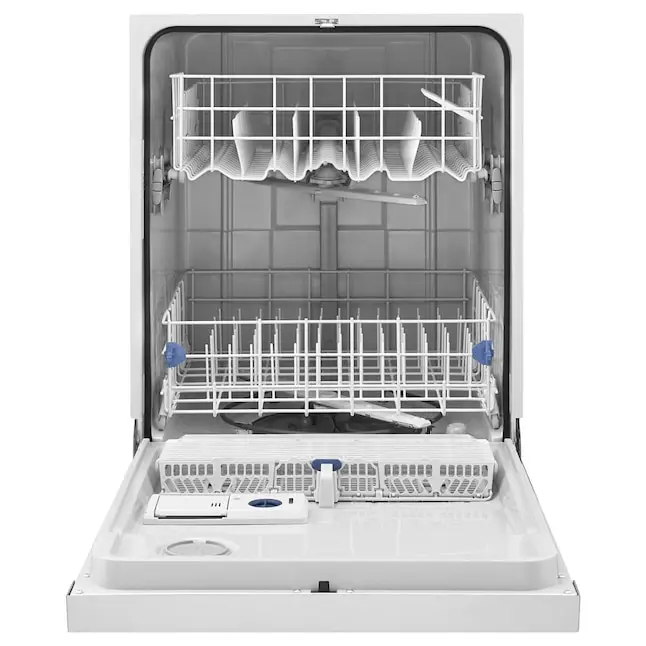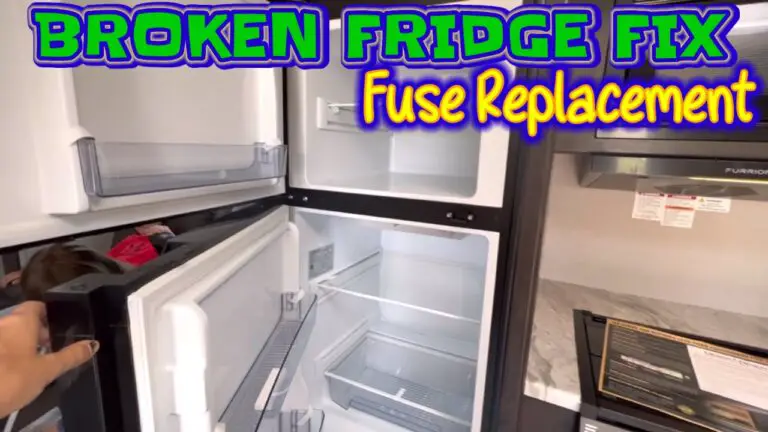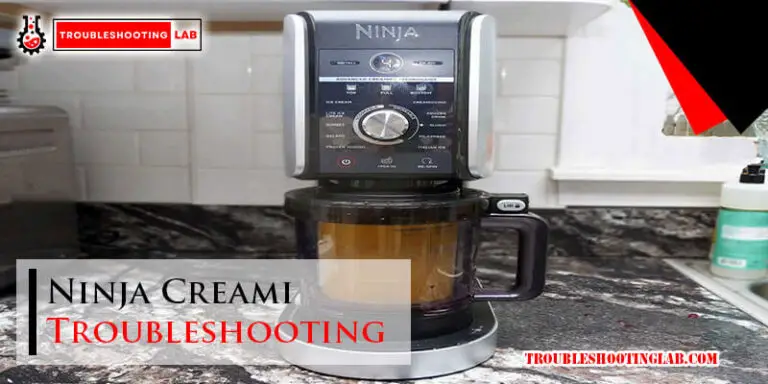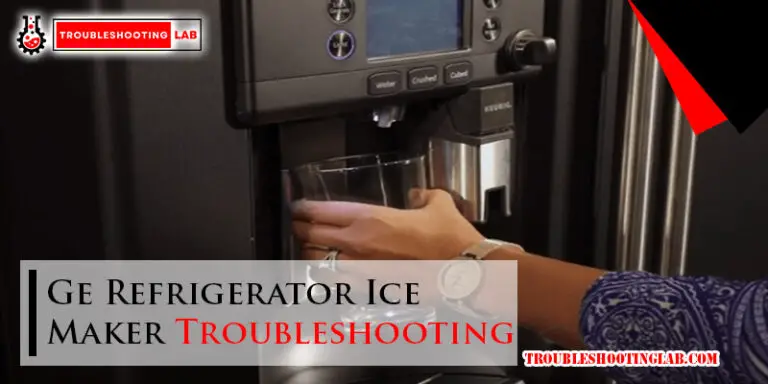Whirlpool Trash Compactor Troubleshooting: Expert Solutions
Whirlpool trash compactor troubleshooting often involves checking the power source, inspecting the drive motor, and ensuring the drawer is properly closed. Regular maintenance and timely repairs can prevent most common issues.A Whirlpool trash compactor simplifies waste management by reducing trash volume, but occasional issues can arise. Common problems include the compactor not starting, failing to compact, or making unusual noises. Understanding these issues and addressing them promptly can save time and money.
Start by examining the power connection, checking for obstructions, and inspecting the drive motor. Regular maintenance, such as cleaning and lubricating, keeps the compactor functioning optimally. This guide helps identify and resolve typical Whirlpool trash compactor problems efficiently.
Common Issues
Whirlpool trash compactors are great for managing waste efficiently. But like any appliance, they can face issues. Understanding these problems helps in quick troubleshooting. Here are some common issues and their solutions.
No Power
One of the most common issues is no power. If your trash compactor doesn’t turn on, check the power source first. Ensure it’s plugged in properly. Next, inspect the circuit breaker. Sometimes, a tripped breaker can cause power loss. Reset it if needed.
Also, examine the power cord for any damage. If it’s frayed or broken, it may need replacing. Lastly, check the safety switch. The compactor won’t start if the door isn’t closed tightly. Make sure the door is secure.
Unusual Noises
Hearing unusual noises from your trash compactor can be alarming. If you hear grinding or banging, there might be an obstruction. Open the compactor and look for any stuck items.
Another cause could be loose parts. Tighten any loose screws or components. If the noise persists, the motor might be failing. It’s best to consult a professional for motor issues.
Stuck Ram
A stuck ram can prevent your trash compactor from functioning. If the ram won’t move, check for any obstructions. Remove any items blocking its path.
Inspect the ram tracks for debris. Clean them thoroughly. If the ram is still stuck, the drive chain might be broken. This requires professional repair. Regular maintenance can prevent ram issues.

Initial Checks
Experiencing issues with your Whirlpool trash compactor? Start with these initial checks to diagnose the problem. Ensuring each component is functioning can save you time and effort.
Power Supply
First, verify the power supply. Ensure the compactor is plugged in securely. Check the outlet by plugging in another appliance. If the outlet is faulty, reset the circuit breaker. Inspect the power cord for any visible damage.
Control Panel
Next, examine the control panel. Make sure the control panel lights up when you press the buttons. If the panel is unresponsive, it may need a reset. Refer to the user manual for reset instructions. Ensure all settings are correct.
Safety Switch
Finally, check the safety switch. The compactor will not run if the safety switch is triggered. Open the door and inspect the switch for any obstructions. Ensure the door is closed properly. If the switch is damaged, it might need replacement.
| Component | Action | Outcome |
|---|---|---|
| Power Supply | Check outlet, reset breaker | Power restored |
| Control Panel | Reset panel, verify settings | Panel responsive |
| Safety Switch | Inspect switch, close door | Compactor operational |
Performing these initial checks can often resolve common issues. If problems persist, professional service may be required.
Motor Problems
The motor is the heart of your Whirlpool trash compactor. Motor problems can disrupt its operation and leave you with uncompressed waste. Understanding these problems can help you troubleshoot effectively.
Motor Not Running
If your motor is not running, the trash compactor won’t work. Here are a few steps to check:
- Ensure the compactor is plugged in.
- Check the circuit breaker.
- Inspect the power cord for damage.
- Verify the door switch is engaged.
If these steps don’t solve the issue, the motor might be faulty. You may need to replace it.
Overheating Motor
An overheating motor can be a serious issue. It can cause the compactor to stop working. Here are some common causes:
- Blocked vents: Ensure vents are clear.
- Overloading: Avoid overfilling the compactor.
- Faulty fan: Check if the cooling fan is working.
If your motor continues to overheat, it might be time for a professional inspection.
| Issue | Possible Solutions |
|---|---|
| Motor Not Running |
|
| Overheating Motor |
|
Compactor Drawer Issues
Experiencing issues with your Whirlpool trash compactor’s drawer can be frustrating. This section will guide you through common compactor drawer issues and provide solutions. Let’s dive into two main problems: drawer not closing and drawer jammed.
Drawer Not Closing
If your compactor drawer won’t close, several reasons might be the cause:
- Obstructions: Check for any items blocking the drawer.
- Alignment: Ensure the drawer is properly aligned with the tracks.
- Rollers: Inspect the rollers for wear or damage.
Follow these steps to troubleshoot:
- Remove any obstructions in the drawer.
- Realign the drawer with the tracks.
- Check the rollers and replace if damaged.
Drawer Jammed
A jammed drawer can prevent your compactor from functioning properly. Here’s what to check:
- Foreign Objects: Look for objects stuck in the mechanism.
- Track Issues: Ensure the tracks are clean and lubricated.
- Motor Problems: Verify the motor is working correctly.
Steps to fix a jammed drawer:
- Remove any foreign objects from the compactor.
- Clean and lubricate the tracks.
- Inspect the motor and call a technician if needed.
By addressing these common issues, your Whirlpool trash compactor should function smoothly. Regular maintenance helps prevent these problems from occurring.
Odor Control
Odor in your Whirlpool trash compactor can be a real issue. Proper odor control ensures a clean and fresh-smelling kitchen. Below are effective ways to manage odors in your trash compactor.
Cleaning Tips
Regular cleaning helps reduce bad odors. Here are some cleaning tips:
- Empty the compactor regularly.
- Use warm, soapy water to clean the bin.
- Rinse the bin thoroughly to remove soap residue.
- Dry the bin completely before using it again.
- Wipe the exterior with a damp cloth.
Replacing Filters
Filters play a crucial role in odor control. Replace filters regularly to maintain freshness.
- Locate the filter compartment.
- Remove the old filter carefully.
- Insert the new filter as per the instructions.
- Ensure the filter is securely in place.
Check your user manual for specific filter types and replacement schedules.
Maintenance Tips
Regular maintenance ensures your Whirlpool trash compactor works efficiently. Simple care routines can prevent many common issues. Follow these tips to keep your compactor running smoothly.
Regular Inspection
Performing regular inspections is crucial. Check the compactor for any visible damage. Look for loose parts or worn-out components.
- Inspect the power cord for fraying or damage.
- Check the ram and track for debris buildup.
- Ensure the foot pedal operates smoothly.
Address any issues immediately to avoid bigger problems later.
Lubrication Points
Proper lubrication keeps your compactor’s moving parts functioning well. Identify the key points that need regular lubrication.
| Component | Lubrication Frequency | Lubricant Type |
|---|---|---|
| Ram Track | Every 6 months | Silicone Spray |
| Foot Pedal | Every 3 months | Light Machine Oil |
| Drawer Rollers | Annually | Grease |
Following these lubrication tips can extend the life of your trash compactor.
Parts Replacement
Is your Whirlpool Trash Compactor not working right? Sometimes, replacing parts can solve the issue. This section will help you understand how to find and replace parts. You will also learn when to call a professional.
Finding Spare Parts
Finding spare parts for your Whirlpool Trash Compactor is easy. You can start by checking the model number. This is usually found on a label inside the compactor. Once you have the model number, you can search online for parts.
Many websites sell Whirlpool parts. Always buy parts from trusted sellers. Look for reviews and ratings. These can help you choose the right seller. Some common parts you may need include:
- Drive belts
- Switches
- Motors
- Door latches
Check the part number before buying. This ensures you get the right part.
Diy Vs Professional Help
Should you fix the compactor yourself or call a professional? This depends on the problem and your skills.
DIY Repair: If you are handy with tools, you can try to fix it yourself. Many parts are easy to replace. Follow the user manual for instructions. You can also find video tutorials online. This can save you money.
Professional Help: Some issues need a professional. If the problem is with the motor or wiring, call a technician. They have the right tools and skills. This ensures the repair is done safely.
Here is a table to help you decide:
| Issue | DIY | Professional |
|---|---|---|
| Replacing Drive Belt | Yes | No |
| Fixing Electrical Issues | No | Yes |
| Changing Door Latch | Yes | No |
| Motor Problems | No | Yes |
Always stay safe. If you are unsure, call a professional.
When To Call A Professional
Even the best DIY enthusiasts sometimes need expert help. Knowing when to call a professional for your Whirlpool Trash Compactor is crucial. Let’s explore the scenarios where professional assistance is essential.
Complex Repairs
Some issues with your Whirlpool Trash Compactor can be very complex. These might include electrical faults, motor issues, or significant mechanical problems. Attempting these repairs without proper knowledge can be dangerous and may cause more damage.
- Electrical faults
- Motor issues
- Significant mechanical problems
If your compactor is experiencing any of these issues, it’s best to call a professional. They have the right tools and expertise to fix the problem safely.
Warranty Considerations
Your Whirlpool Trash Compactor likely comes with a warranty. This warranty may cover specific repairs or replacements. Attempting to fix certain issues on your own might void this warranty.
| Action | Warranty Status |
|---|---|
| DIY Repairs | May Void Warranty |
| Professional Repairs | Usually Maintains Warranty |
Always check your warranty terms before attempting any repairs. If unsure, consult a professional to avoid losing your warranty coverage.
Frequently Asked Questions
What Is A Common Problem With Trash Compactors?
A common problem with trash compactors is jammed or stuck compacting mechanisms. This can occur due to overloading or debris. Regular maintenance helps prevent these issues.
Why Is My Whirlpool Trash Compactor Not Compacting?
Your Whirlpool trash compactor may not be compacting due to a faulty motor, broken drive belt, or defective start switch. Check these components for issues.
How Do I Reset My Trash Compactor?
To reset your trash compactor, unplug it first. Locate the reset button, usually near the motor. Press and hold the reset button for 5 seconds. Plug the compactor back in and test its functionality.
How Do You Get A Trash Compactor Unstuck?
To get a trash compactor unstuck, unplug it first. Check for any visible obstructions and remove them. Use a wrench to manually turn the motor. If that doesn’t work, consult the manual or call a professional.
How Do I Reset My Whirlpool Trash Compactor?
Press and hold the reset button for 5 seconds.
Conclusion
Troubleshooting your Whirlpool trash compactor can be simple with the right guidance. Use these tips for effective solutions. Regular maintenance extends the lifespan of your appliance. Addressing minor issues promptly can prevent costly repairs. Keep your trash compactor running smoothly and enjoy its convenience.
Remember, a well-maintained appliance saves time and effort.






